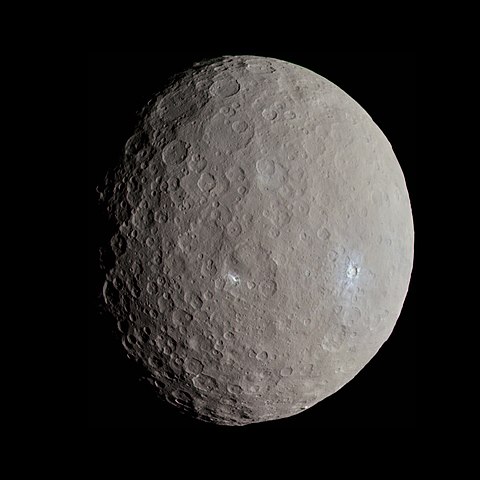Dwarf planets are celestial bodies that orbit the Sun and are large enough to be rounded by their own gravity, but they are not considered planets because they do not dominate their orbits. There are currently five recognized dwarf planets in our solar system: Ceres, Pluto, Haumea, Makemake, and Eris.
Ceres is the largest and most massive object in the asteroid belt, a region of the solar system between Mars and Jupiter that is filled with small, rocky objects. Ceres was discovered in 1801 and was originally classified as a planet, but it was later reclassified as an asteroid and then a dwarf planet. It is believed to be made up of rock, water ice, and other volatile materials, and it has a diameter of about 590 miles (940 kilometers).
Pluto is perhaps the most well-known dwarf planet, as it was originally classified as the ninth planet in our solar system before being reclassified in 2006. Pluto is located in the Kuiper Belt, a region beyond Neptune that is filled with small, icy bodies. It is made up of rock, ice, and other materials, and it has a diameter of about 1,475 miles (2,377 kilometers).
Haumea is a dwarf planet located in the Kuiper Belt, and it is made up of rock and ice. It is shaped like an ellipsoid and has two small moons, Hi’iaka and Namaka. Haumea was discovered in 2004, and it has a diameter of about 890 miles (1,430 kilometers).
Makemake is another dwarf planet located in the Kuiper Belt, and it is made up of rock, ice, and other materials. It was discovered in 2005, and it has a diameter of about 715 miles (1,150 kilometers).
Eris is a dwarf planet located in the Kuiper Belt, and it is made up of rock, ice, and other materials. It is the most massive known dwarf planet in the solar system, and it has a moon called Dysnomia. Eris was discovered in 2005, and it has a diameter of about 1,445 miles (2,320 kilometers).
Dwarf planets are fascinating objects that provide insights into the early history and evolution of our solar system. They are a reminder that there is still much to learn about the universe and the many celestial bodies that inhabit it.

